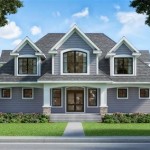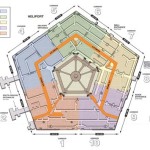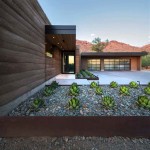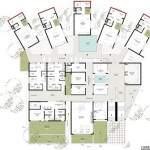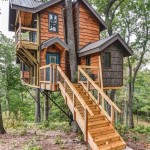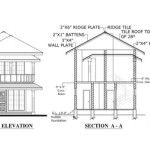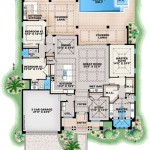Feel free to address possible misunderstandings or incorrect assumptions that readers might have. ## Home and Garden House Plans: Designing a Harmonious Living Space
Home and garden house plans are blueprints that comprehensively detail the design and layout of a residence, with specific attention paid to the integration of indoor and outdoor spaces. These plans extend beyond the traditional architectural designs by considering the overall aesthetic and functional harmony between the home itself and the surrounding landscape. A well-executed home and garden house plan maximizes natural light, promotes efficient use of space, and creates a seamless transition between the interior and exterior, enhancing the living experience.
The creation of such plans involves a multidisciplinary approach, requiring collaboration between architects, landscape designers, and homeowners. This collaborative process ensures that the final design reflects the homeowner's lifestyle, preferences, and the specific characteristics of the property. Factors such as climate, soil conditions, local ordinances, and budget are all carefully considered during the planning phase.
A common misconception is that home and garden house plans are merely aesthetic enhancements. While they certainly contribute to the visual appeal of a property, their primary function is to create a functional and sustainable living environment. These plans address practical considerations such as drainage, irrigation, accessibility, and energy efficiency, ensuring that the home and garden work together as a cohesive unit.
Understanding the Key Components of Home and Garden House Plans
Home and garden house plans encompass a range of detailed drawings and specifications. It is composed of several key elements that must be present to effectively build a harmonious living space:
Architectural Drawings: These drawings provide a detailed representation of the house's structure, including floor plans, elevations, sections, and details. Floor plans illustrate the layout of rooms, indicating dimensions, door and window locations, and the placement of fixtures and appliances. Elevations depict the exterior facades of the house, showcasing the architectural style and materials used. Sections provide a cut-through view of the house, revealing the internal construction details. Detail drawings focus on specific elements, such as window casings, door frames, and roof overhangs, providing precise instructions for construction.
Landscape Plans: Landscape plans illustrate the design of the outdoor spaces, including the placement of plants, trees, walkways, patios, and other landscape features. These plans consider factors such as sun exposure, soil type, and water availability to ensure the long-term health and sustainability of the landscape. Landscape plans often include detailed planting schedules, specifying the types of plants to be used, their sizes, and their spacing. They also address drainage and irrigation systems to manage water runoff and ensure adequate watering for plants.
Irrigation and Drainage Plans: Effective water management is crucial for maintaining a healthy landscape and preventing water damage to the house. Irrigation plans detail the layout of irrigation systems, including drip lines, sprinklers, and timers. These plans are designed to deliver water efficiently and evenly to plants, minimizing water waste. Drainage plans address the management of stormwater runoff, directing water away from the house and preventing flooding. These plans may include the installation of drainage pipes, swales, and French drains.
Hardscape Plans: Hardscape elements, such as patios, walkways, driveways, and retaining walls, play a significant role in defining the outdoor spaces and enhancing their functionality. Hardscape plans specify the materials to be used, their dimensions, and their installation methods. These plans consider factors such as aesthetics, durability, and safety. For example, walkways may be designed with non-slip surfaces to prevent accidents, and patios may be oriented to maximize sun exposure or provide shade.
Lighting Plans: Outdoor lighting enhances the beauty of the landscape and improves safety and security. Lighting plans specify the types of fixtures to be used, their placement, and their wiring. These plans consider factors such as energy efficiency, light pollution, and aesthetics. For example, low-voltage lighting may be used to illuminate pathways and highlight landscape features, while motion-sensor lights may be installed for security purposes.
Construction Details: These provide specific instructions on how to build certain elements of the garden or property. These details might refer to specific architectural elements, or they might refer to how certain plants will be placed on the property.
Integrating Indoor and Outdoor Spaces
A key objective of home and garden house plans is to create a seamless transition between indoor and outdoor spaces. This can be achieved through various design strategies that blur the lines between the house and the garden.
Large Windows and Doors: Expansive windows and doors, such as sliding glass doors, French doors, and picture windows, allow natural light to flood the interior spaces and provide unobstructed views of the garden. These features create a visual connection between the inside and outside, making the garden feel like an extension of the living space. Operable windows and doors also allow for natural ventilation, improving indoor air quality and reducing reliance on air conditioning.
Outdoor Living Areas: Patios, decks, and porches provide opportunities for outdoor living and entertaining. These spaces can be designed to complement the architectural style of the house and to create a comfortable and inviting atmosphere. Outdoor living areas may include features such as outdoor kitchens, fireplaces, and seating areas, making them functional extensions of the indoor living spaces. Careful consideration is given to the orientation of these spaces to maximize sun exposure or provide shade, depending on the climate.
Landscaping as an Extension of the Interior: The landscaping can be designed to mimic the interior design, creating a cohesive and harmonious aesthetic. For example, the use of similar colors, textures, and materials in both the interior and exterior spaces can create a sense of continuity. Plants can be strategically placed to frame views, provide privacy, and create visual interest. The design of the garden can also be influenced by the architectural style of the house, with formal gardens complementing traditional homes and informal gardens complementing modern homes.
Consider Vertical Spaces: It is important to create plans for vertical spaces. These spaces may take the form of a green wall, a balcony, or a garden on the roof of the home. Vertical spaces extend the functionality of the garden, and they also create a layered look to the property.
Water Features: Water features, such as ponds, fountains, and waterfalls, can add a sense of tranquility and beauty to the garden. The sound of water can be soothing and relaxing, and the presence of water can attract wildlife, such as birds and butterflies. Water features can be integrated into the landscape in various ways, from small ornamental fountains to large naturalistic ponds.
Paths and Walkways: Paths and walkways connect different areas of the garden and provide access to outdoor living spaces. These elements can be designed to be both functional and aesthetically pleasing, using materials such as stone, gravel, or pavers. Paths and walkways can be designed to meander through the garden, creating a sense of discovery and encouraging exploration.
Addressing Practical Considerations and Sustainability
Beyond aesthetics, home and garden house plans must address practical considerations such as accessibility, maintenance, and sustainability. Planning for these aspects ensures that the home and garden are functional, efficient, and environmentally responsible.
Accessibility: The design should consider the needs of all users, including individuals with disabilities. Accessible design features may include ramps, wider doorways, and accessible landscaping. These features ensure that the home and garden can be enjoyed by people of all ages and abilities.
Maintenance: The design should minimize the need for maintenance by selecting durable and low-maintenance materials and plants. For example, drought-tolerant plants can reduce the need for irrigation, and artificial turf can eliminate the need for mowing and watering. The design should also consider the ease of cleaning and maintaining outdoor surfaces, such as patios and walkways.
Sustainability: Incorporating sustainable design principles can reduce the environmental impact of the home and garden. Sustainable design features may include energy-efficient lighting, water-saving irrigation systems, and the use of recycled or locally sourced materials. The design should also consider the use of native plants, which are adapted to the local climate and require less water and maintenance. Composting and rainwater harvesting can also be incorporated into the design to reduce waste and conserve water.
Permitting: Another element of your garden plan is to check and see if you need a permit before you can begin work on your garden. Check local and state building laws to see if you need a permit to begin.
Budget: It is important to consider the budget early on in the planning process. The materials that you use, and the plants that you buy, must fit within your budget. Consult with a landscape designer to make sure that the plan is financially viable.
The successful execution of home and garden house plans requires careful planning, attention to detail, and collaboration between various professionals. When done effectively, these plans can transform a property into a harmonious and functional living environment that enhances the quality of life for its occupants.

Find Floor Plans Home Designs And Architectural Blueprints Courtyard House Interior Cottage

Pin On Home Garden

Home And Garden Wheelchair Accessible House Plans

1937 Better Homes Gardens Bildcost House Plan No 602 Board Batten Vernacular Cottage Small Design Inspiration Vintage American Architure

22 Cool Collection Hacienda Style Home Plans Decor And Garden Ideas Floor Unique House Mexican

12 Simple 2 Bedroom House Plans With Garages Houseplans Blog Com

The Wharton Ii House Plan One Story

Gabilio Home And Garden 3d House Plans Apartment Floor

Craftsman Style House Plans Big And Small Houseplans Blog Com

27 Adorable Free Tiny House Floor Plans Craft Mart

